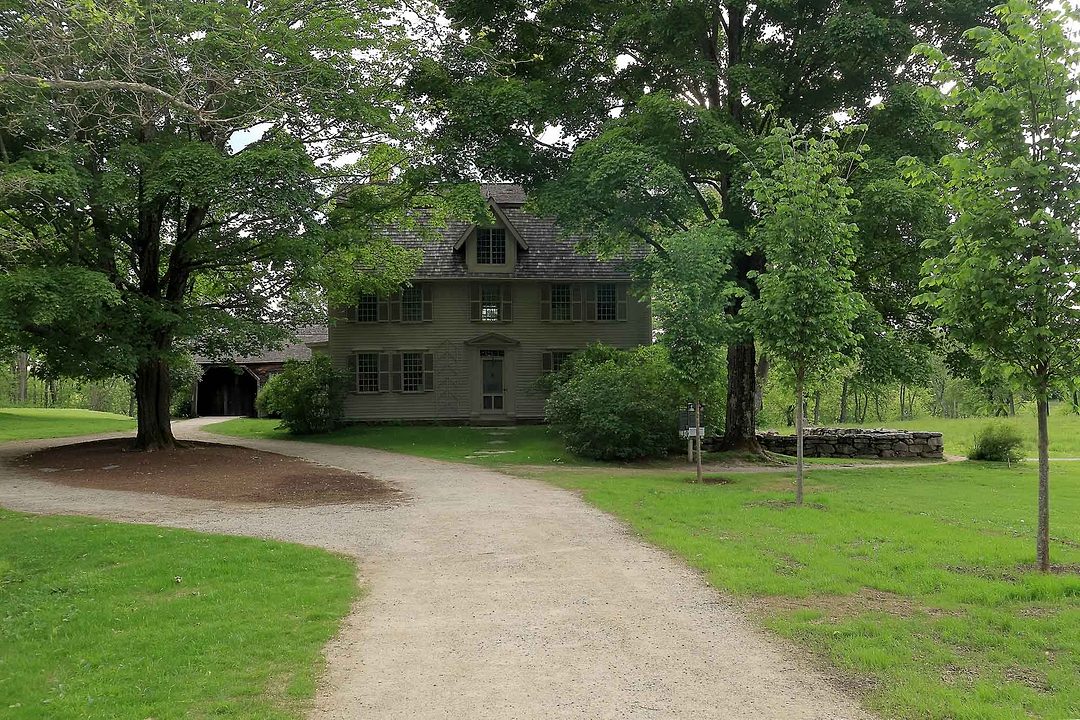On July 9, 1842, a small wedding took place at the bookstore of Elizabeth Peabody at 13 West Street in Boston. After a highly secretive three-year engagement, 38-year-old struggling novelist Nathaniel Hawthorne married 33-year-old Sophia Amelia Peabody, the younger sister of the bookstore owner. Officiated by the Reverend James Freeman Clarke, only five people attended the ceremony: Sophia’s mother and two sisters, along with her two best friends, Connie Park and Sarah Clarke, the minister’s sister. The groom’s mother and two sisters were not pleased with the whole “affair” (as they called it) and were not in attendance. However, Hawthorne would write to his family the next day:
“The execution took place yesterday. We made a christian end, and came straight to Paradise, where we abide at this present writing. We are as happy as people can be, without making themselves ridiculous, and might be even happier; but, as a matter of taste, we choose to stop short at this point. Sophia is very well, and sends her love.”
Immediately after the ceremony the newlyweds took a carriage ride out to Concord. It was there that they would begin their married life, in a 72-year-old house that Hawthorne would soon call The Old Manse. The vacant home, previously owned by the recently deceased Reverend Ezra Ripley, was offered to the Hawthornes through a kinsman of Dr. Ripley, Ralph Waldo Emerson. He showed the couple the house in the spring of 1842; at $100 a year, the place was affordable (even to a struggling writer) and the deal was done. The Hawthornes liked the idea of living in Concord, while Emerson liked the thought of having another writer, albeit a novelist, in Concord; “I like him well” he would write a friend.

Nathaniel Hawthorne by Whipple, circa 1848
Indeed, because of Emerson, Concord had become the literary center of the Universe for all sorts of poets, writers, and Transcendentalists. Henry Thoreau, an Emerson protégé, had lived in Concord his entire life, while the philosopher Bronson Alcott and his family moved to town in 1840. A mutual friend of both Emerson and Hawthorne, Margaret Fuller (herself a frequent visitor to Concord) thought that Nathaniel would fit quite well into Emerson’s clique. “You will find him more mellow than most fruits at your board,” she told Waldo, “and of distinct flavor, too”.
“Distinct flavor” indeed. Hawthorne would never feel entirely at ease with the philosophers and poets who flocked to Concord. He liked them well enough, but he was no Transcendentalist, and he looked upon his metaphysically-inclined neighbors with detached humor and a slight disdain. “Never was a poor little country village infested with such a variety of queer, strangely dressed, oddly behaved mortals, most of whom took upon themselves to be important agents of the world’s destiny, yet were simply bores of a very intense water” he would write in Mosses From an Old Manse.
Still, those same neighbors happily welcomed the Hawthornes to town. When they arrived at their new home they found it filled with flowers, courtesy of Sophia’s friend, Elizabeth Hoar. Outside, a new kitchen garden had been planted, courtesy of Henry Thoreau, while Emerson himself met the newlyweds with a hearty, “How do you do, MRS. Hawthorne!” They were home.
To say that the Hawthornes were in wedded bliss would be an understatement. The Manse quickly became known as “our Eden‘’ and “Paradise” to the couple. They’d been calling each other “husband” and “wife” since they’d gotten engaged in 1839, but now there were new nicknames between the two; Hawthorne called her “Sophie,” “My Dove,” “Belovedest,” and “My Ownest Wife” while Sophia reveled in the attention of her “Beloved Husband.” She would report on their new home to her mother:
“It is a perfect Eden round us. Everything is as fresh as in first June. We are Adam and Eve and see no persons round! The birds saluted us this morning with such gushes of rapture, that I thought they must know us and our happiness.”
Paradise came very close to ending when Margaret Fuller wrote the Hawthornes and suggested that another newly married couple, her sister Ellen and the poet Ellery Channing, might want to live with them at the Manse. Hawthorne sent Margaret a tactful letter of refusal: “Had it been proposed to Adam and Eve,” he said, “to receive two angels into their Paradise, as borders, I doubt whether they would have been altogether pleased to consent.”

Sophia Peabody Hawthorne
| Public domainThe couple began keeping a journal together, a joint effort in which the newlyweds would keep a record of their new life. Knowing that one would read what the other wrote, the journal became an almost daily affirmation of the Hawthornes’ love for each other. In his first entry, Nathaniel wrote,
“A rainy day…and I do verily believe there is no sunshine in this world, except what beams from my wife’s eyes. It is usually supposed that the cares of life come with matrimony, but I seem to have cast off all care, and live on with as much easy trust in Providence as Adam could possibly have felt before he had learned that there was a world beyond his Paradise.”
Obviously meant for their eyes only, sometimes the journal could be quite scandalous in its honesty. In one entry, Sophia wrote happily about their love:
“Oh lovely God!” I thank thee that I can rush into my sweet husband with all my many waters, & sing & thunder with all my waves in the vast expanse of his comprehensive bosom—How I exult there—how I foam & sparkle in the sun of his love. . . . I myself am Spring with all its birds, its rivers, its buds, singing, rushing, blooming in his arms. I feel new as the Earth which is just born again—I rejoice that I am, because I am his, wholly, unreservedly his.”
Eventually, the honeymoon would have to end; The Hawthornes’ first daughter, Una, would be born at the Manse on March 3, 1844, and by the end of 1845 Sophia would be pregnant again, this time with their son, Julian. Hawthorne published Mosses From an Old Manse in 1846, but writing was far from lucrative and the couple had a hard time paying the monthly rent. Besides, the Reverend Samuel Ripley, the son of Reverend Ezra Ripley, wanted to move into the Manse with his wife, the brilliant Sarah Alden Bradford Ripley, and their children. It was his house, after all.
The Hawthornes would leave the Manse in October 1845 and move back to their hometown of Salem, Massachusetts. However, they would return to Concord in 1852, with Hawthorne now famous and successful, thanks to The Scarlet Letter and The House of Seven Gables. They purchased the Alcott home known as Hillside and Hawthorne changed the name to The Wayside; it would be the only home that he would ever own.
But it’s no stretch to say that the couple’s happiest years were the ones that they spent at the Manse. Hawthorne and Sophia embraced their marriage with the passion of people half their age, and the old house was filled with love, romance, and happiness; a “blissful seclusion” where, Hawthorne would remember, “all my dreams became realities.”


